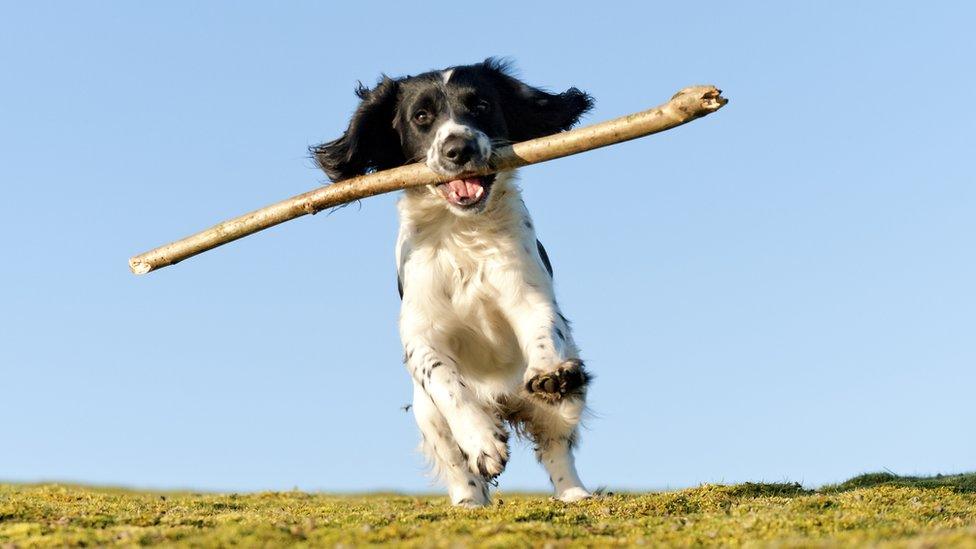Want to unlock your dog’s full potential while having a blast together? Skill-building games are the secret sauce to effective dog training that both you and your furry friend will enjoy. Creating engaging training games for dogs isn’t just about teaching tricks – it’s about building a stronger bond, boosting their confidence, and keeping their minds sharp. Whether you’re starting with basic commands or ready to tackle advanced challenges, the right approach can transform training sessions into exciting playtime. In this comprehensive guide, we’ll walk you through everything from simple hide-and-seek games to complex problem-solving activities. You’ll discover how to: • Design games that match your dog’s skill level • Use positive reinforcement effectively • Progress from basic to advanced training • Keep your dog mentally stimulated Ready to turn training time into quality bonding time? Let’s explore how to create fun, engaging games that will have your dog learning and loving every minute of it.
Foundation Games for Beginners
Focus and Attention Games
Starting with focus games is crucial for building a strong training foundation. These games help establish a connection between you and your dog while developing their concentration skills. One effective brain game is the “Watch Me” exercise, where you teach your dog to maintain eye contact. Begin by holding a treat near your face and reward your dog when they look at you.
Another engaging activity is the “Name Game.” Call your dog’s name in different situations and reward them when they respond. This helps them associate their name with positive experiences and strengthens their attention span. You can gradually increase the difficulty by adding distractions or distance.
Basic Command Games
Transform basic obedience training into fun, interactive sessions. Start with simple commands like “sit” and “stay,” incorporating hand signals alongside verbal cues. This dual-communication approach helps dogs learn faster and retain commands better.
The “Red Light, Green Light” game is perfect for teaching impulse control. Walk with your dog and suddenly stop – they should stop too. When they maintain position, reward them. This game reinforces basic commands while making training enjoyable.
Create a “Follow the Leader” exercise where you walk in different patterns, encouraging your dog to stay close. Use treats and praise to reward them for maintaining position. This helps develop leash manners while strengthening the bond between you and your pet.
Mix these games with short training sessions to keep your dog engaged. Remember to use clear hand signals consistently and always reward progress, no matter how small. These foundation games set the stage for more advanced training while keeping the learning process fun and rewarding.
Intermediate Skill-Building Activities
Problem-Solving Games
Problem-solving games are essential for advancing your dog’s cognitive abilities and creating an engaging learning experience. These activities challenge your furry friend to think critically and develop new skills through interactive play.
One effective dog training game involves hiding treats under cups or containers. Start with simple arrangements and gradually increase difficulty by using more containers or adding distractions. This helps develop your dog’s object permanence and deductive reasoning skills.
Another challenging activity is the puzzle toy progression. Begin with basic puzzle feeders and slowly introduce more complex versions. This systematic approach to trick training helps your dog understand cause-and-effect relationships while maintaining their interest and motivation.
Environmental Enrichment Activities
Environmental enrichment takes skill-building to the next level by incorporating various elements from your dog’s surroundings. These activities combine physical exercise with mental stimulation, creating a comprehensive learning experience.
Create an obstacle course using household items like boxes, blankets, and chairs. Guide your dog through the course, teaching them to navigate different textures and heights. This type of dog training game builds confidence and spatial awareness while strengthening the bond between you and your pet.
Set up a scent trail using treats or toys, encouraging your dog to use their natural tracking abilities. Start with straightforward paths and gradually make them more complex by adding turns and different surfaces. This activity taps into their instinctive behaviors while providing mental stimulation.
Incorporate interactive toys that dispense treats based on specific actions. This helps your dog learn patience and problem-solving skills while keeping them engaged in the training process. Remember to rotate these activities to maintain interest and prevent boredom.
Advanced Training Challenges
Complex Problem-Solving Games
When your furry friend has mastered basic training exercises, it’s time to elevate their mental stimulation with advanced behavior challenges. These complex games require serious training dedication and push your dog’s cognitive abilities to new heights.
Start by introducing multi-step puzzles that require your dog to perform a sequence of actions. For example, create a treasure hunt where they must first find a specific toy, bring it to a designated spot, and then perform a learned command to receive their reward. This builds problem-solving skills while reinforcing previous training.
Layer different level challenges by combining multiple commands into one fluid sequence. Have your dog weave through obstacles, retrieve an item, and then place it in a specific container – all while maintaining focus and discipline. This type of advanced training helps develop their ability to chain behaviors together.
Consider incorporating delayed gratification exercises. Place treats under cups and teach your dog to wait for your signal before investigating. Gradually increase the waiting time and add distractions to build impulse control and concentration.
Interactive puzzle toys designed for advanced players can also provide excellent mental workouts. Look for toys that require multiple steps to access rewards, teaching your dog to think critically and persist through challenges.
Remember to maintain a positive training environment even during these complex exercises. Break down difficult tasks into manageable steps and celebrate small victories to keep your dog engaged and motivated.



